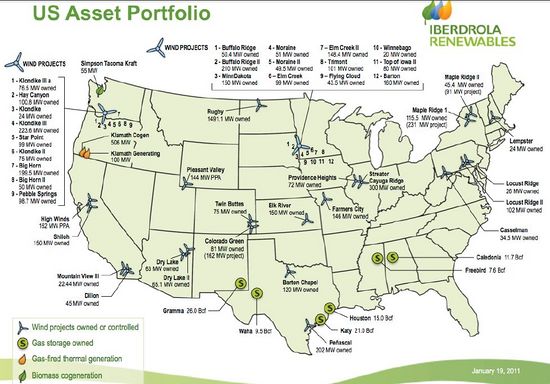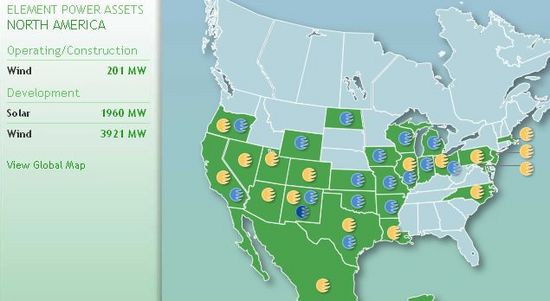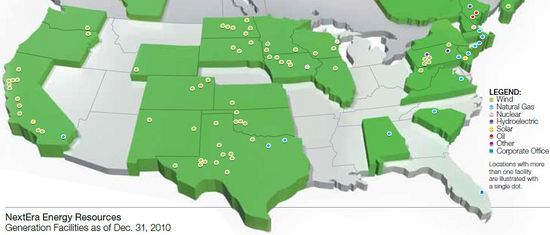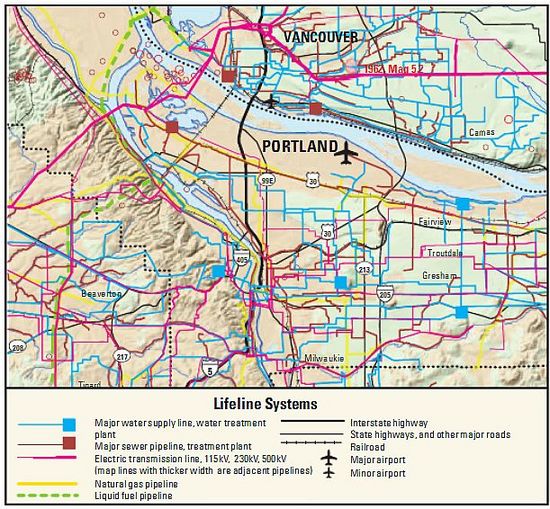Energy Financing

<< Back to: Green industry <<
Iberdrola Renewables [1] is the world's largest renewable energy firm. The Spanish multinational is based in Valencia, Spain, with a headquarters office in Portland. It's the world's largest owner-operator of wind farms and operates solar, hydro, biomass and wave power businesses. Iberdrola Renovables[2] has 41 wind farms in the United States with an installed capacity of 3,877 megwatts[3], enough to power close to 1 million average U.S. households.

Element Power, a developer of large-scale wind and solar projects, oversees nearly 7,800 megawatts of wind energy and more than 1,700 megawatts of solar power, worldwide. Element Power has some 141 megawatts of renewable energy in operation.

Element Power’s North American headquarters are in Portland and oversee the wind projects and solar that are predominately located in the United States. Element Power is owned by Hudson Clean Energy Partners, a N.J.-based private equity fund created in 2007 by the team that ran Goldman Sachs’ clean energy investment group. They turned Houston-based Horizon Wind Energy into the third-largest renewable energy company in the U.S. The company hopes to employ 50 workers with a payroll of up to $8 million.
Wind and solar operator NextEra Energy, a subsidiary of Florida Power & Light is North America’s top producer of energy from the wind and the sun] with 85 wind facilities (approximately 9,500 wind turbines) in operation in 17 states and three Canadian provinces, with an installed capacity of nearly 8,300 MW of electricity.

Next Era Energy sells power from wind farms and solar arrays to the wholesale power market. They also claim to be the largest generator of solar power in the United States. They co-own and operate seven solar plants in California’s Mojave Desert, that are collectively the world’s largest solar site, with 315 MW of solar (thermal) power.
Members of the Renewable Northwest Project include many for-profit companies working in the renewable energy sector.
The Oregon Department of Energy has released information about the 2011 application process for the Business Energy Tax Credit. Applications for the next round of "Tier 1" credits opens Jan 3, 2011. For this category, there is $15 million in tax credits available for projects with an estimated cost of less than $500,000.
The traditional Feed in Tariff model, such as the one used in Germany, pays a premium for kWh as they are generated. Oregon's model differs slightly in that you will not operate as a mini power producer for the grid, but will use the power on site to offset your electric costs. As well as saving money on your bill, you will receive an additional incentive amount from the utility for your solar electricity production. You will be subject to current net metering policies which restrict system sizes to produce equal or less than the energy consumed on site on an annual basis. A new report from the National Renewable Energy Laboratory (NREL) examines feed-in tariffs (FITs). The policy is known for spurring dramatic growth of renewable energy in Europe during the past decade.
Emissions trading or cap-and-trade is a market-based approach used to control pollution by providing economic incentives for achieving reductions in the emissions of pollutants. The overall goal of an emissions trading plan is to minimize the cost of meeting a set emissions target. Terry Gross explains Cap and Trade, which allows businesses that go over their carbon "budget" to buy "credits" from business who use less then their allowance of "carbon offsets".
SolarCity's financing options let homeowners and businesses in Beaverton, for example, switch to solar power with little or no up-front investment; power is sold directly to the utility.
SolarCity expanded its presence in Oregon, offering a lease program to customers of Portland General Electric and Pacific Power. It virtually eliminate upfront costs, allowing homeowners to get rooftop solar panels for as little as $20 per month. The new rules allow customers who choose to lease their solar systems to receive the residential tax credit (RETC) that was previously only available to customers that purchased solar systems. SolarCity then sells the "green" power directly to power companies. The Oregon DOE has details.
Beaverton's 1000 watt array illustrates how to figure your typical power generation, then compare it with your power bill and total solar installation costs. Grape Solar’s kits retail for 25-30K and provide all the power for an average middle-class home. They're out of Eugene. Without subsidies, which can amount to 75% of the cost, solar has a ways to go to reach parity in the home.
The Treasury Grant Program (TGP) for renewable energy projects was passed in mid December 2010. It extends the cash payment of up to 30% of equipment costs in place of the Investment Tax Credit. The grant program was responsible for a large portion of the renewable energy projects built throughout the U.S. in 2010. Originally passed as part of the 2009 stimulus package, it was supposed to expire at the end of December.
The American Wind Energy Association projected a loss of tens of thousands of wind jobs in 2011 without an extension of the TGP while the Solar Energy Industries Association said the grant program spurred over 1,100 solar projects and $18 billion dollars of investment in 2010.

NEXT: Coal Fired Power in Oregon
Back to: Green industry <<